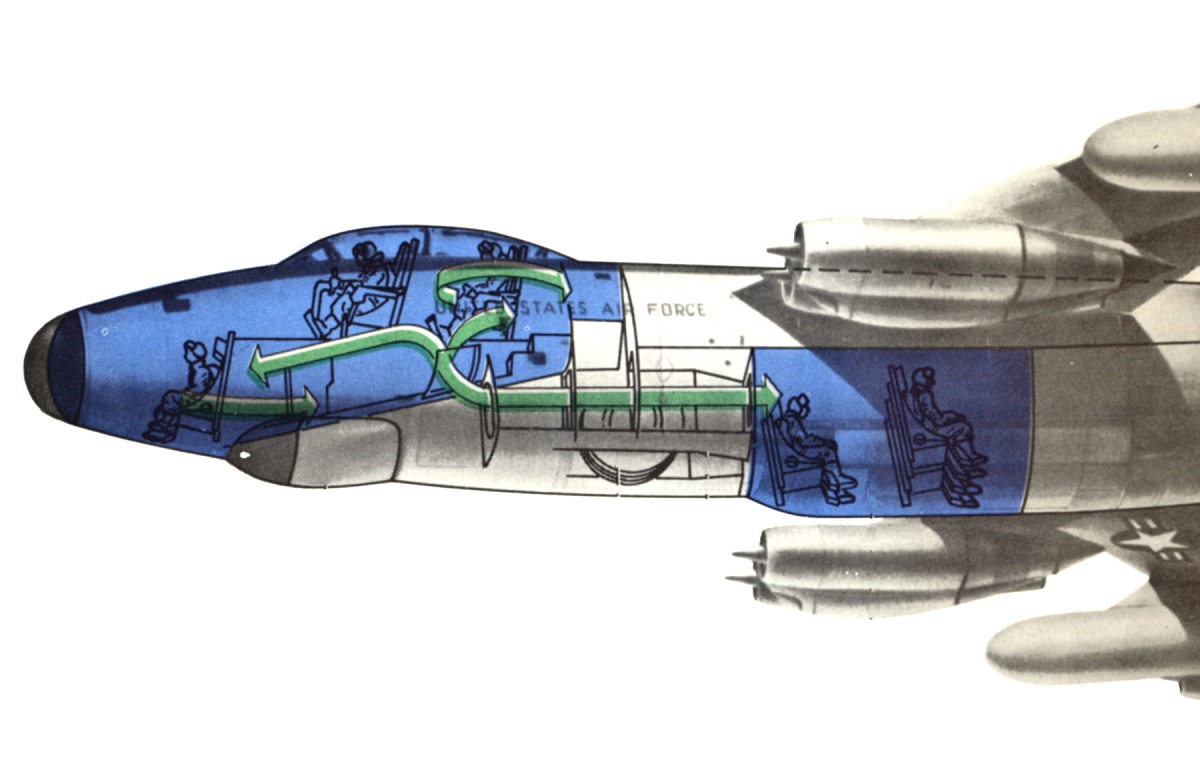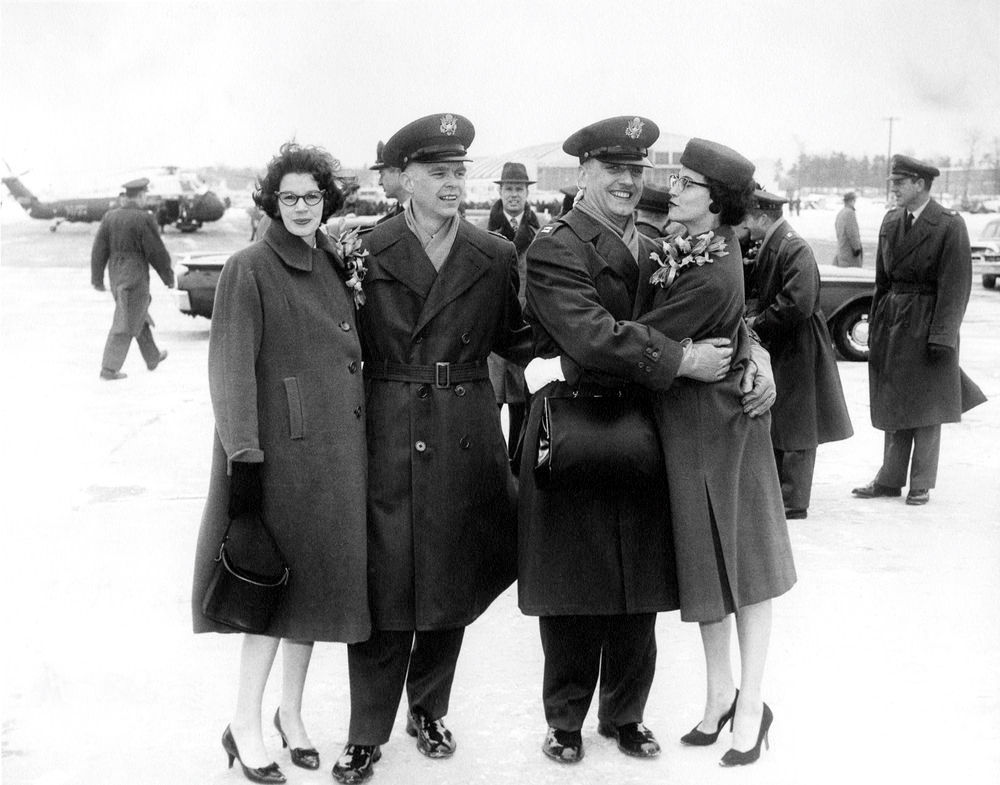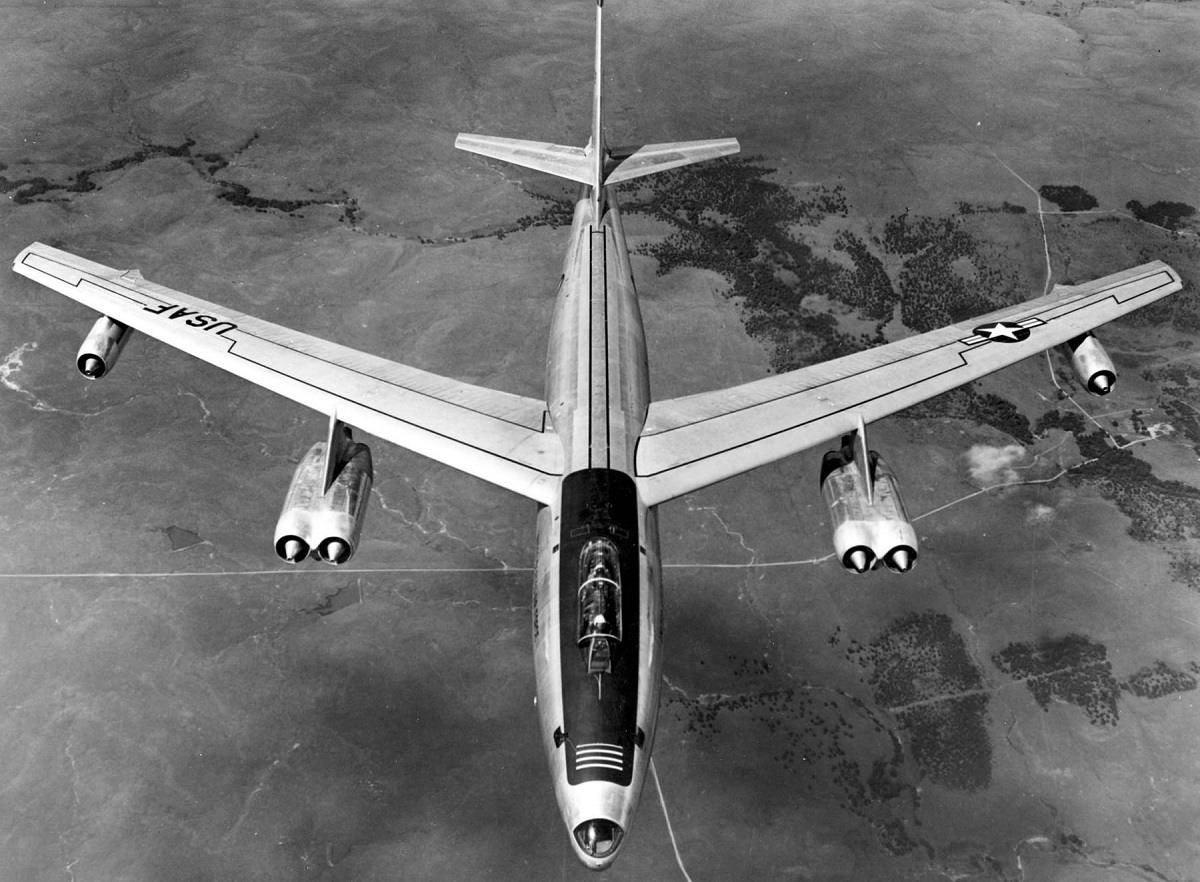Before swinging back to launch a cannon strike, the MiG-19 broke away from the RB-47H during the maneuver. The aircraft was shot down after two firing attempts
The 55th Strategic Reconnaissance Wing (SRW), headquartered at Forbes AFB, Kansas, was re-equipped with the specially modified RB-47H type of the B-47 Stratojet during the second half of 1955, replacing their outdated Boeing RB-50Gs. Three Special Operators were transported by the RB-47H in a pressurized bomb-bay capsule. The APD-4 automatic receiver/analyzer served as the primary Elint system for the aircraft, with manual APR-17 receivers, an ALA-6 direction finding (D/F) system, and ALA-74 pulse analyzers serving as backups. Regular monthly detachments to the UK were undertaken by the RB-47Hs of the 55th SRW, from whence they launched Elint sorties over Europe.

An RB-47H (53-4281) of the 55th SRW, based at RAF Brize Norton in Oxfordshire, launched an Elint sortie into the Barents Sea on July 1st, 1960. The aircraft flew in international airspace about 50 miles (80 km) off the Russian coast while traveling up the Norwegian coast, around the North Cape, and then southeast along the Kola Peninsula’s coastline. A MiG-19 Farmer intercepted the RB-47H as it got close to the tip of the peninsula and flew in tight formation with it. The RB-47H performed a predetermined maneuver to the northeast, moving away from the coastline, about 50 miles (80 km) off Cape Svyatoy Nos (Holy Nose Point), close to the entrance to the White Sea.
The RB-47H broke away from the MiG-19 during the maneuver, and it then swung back to launch a cannon strike. The aircraft was downed after two fire passes. Sadly, only Col. Bruce Olmstead, the co-pilot of the RB-47H, and John McKone, the navigator, remained alive; the three Special Operators perished. Later, the Soviet Union used the assertion that the aircraft had violated Soviet territorial waters by approaching a location 11.83 miles (19 km) north of Svyatoy Nos to defend against the strike.
Over the Arctic Ocean, Olmstead and McKone were forced to eject from their damaged aircraft. They were detained in the Soviet Union for seven months. The KGB sent Olmstead and McKone to Moscow’s feared Lubyanka prison and accused them of spying after they survived the downing of their RB-47H. They were interrogated nonstop while being confined in isolation in a freezing cell with limited opportunities for food or rest.

They knew plenty of secrets. But neither Olmstead nor McKone gave up a thing to the KGB during seven months of solitary confinement.
“They continued to fulfill the Airman’s Creed, to never surrender,” explained retired Brig. Gen. Reg Urschler of Bellevue, a squadron mate of Olmstead’s later commanded the 55th Strategic Reconnaissance Wing (SRW). “None of us can imagine what they went through.”
After his release, Olmstead never flew again for the 55th, but he became a test pilot and, later, an air attaché in Denmark, and he retired as a colonel in 1983. Post-military, he became a home remodeling contractor. He visited Russia and hosted Russian military veterans in his home.
However, he carried the effects of those months in jail with him for the rest of his life.
“You can’t sit in a cell for 211 days without it affecting you,” he told the Washington Post in 1978. “You don’t forgive and forget. You forgive, and you live with it.”

In 2004, after Cold War veterans became eligible for combat medals, Olmstead and McKone (who passed away in 2013) finally earned their Silver Star medals. After two years, Olmstead gave his to the 55th Wing.
The loss of the RB-47H increased scrutiny of US units operating out of the UK, according to Dave Forster and Chris Gibson in their book Listening In, RAF Electronic Intelligence Gathering Since 1945. It was discovered that the UK was typically given the Navigator’s log and intelligence findings from each flight sometime thereafter but was not typically given the route of US Elint missions in advance. The Air Ministry was only generally informed about the expected aircraft track of any sortie as a result.
Later, the flight plan for the RB-47H sortie on July 1 as well as ground intercepts of Soviet air defense activities, including tracking information, were forwarded to the Air Ministry. This suggested that the intended distance from the Soviet coast was to be 60nm (111km), however, intercept evidence suggested that the RB-47H had actually closed to 28 nautical miles (52km) before continuing on its intended course and standing off by about 66nm (122km). Although the tracking information was inconsistent, it seemed to indicate that the aircraft may have closed the coast again before being shot down.
The RB-47 remained in service until 1967, when the RC-135 took its place.

Photo by U.S. Air Force

